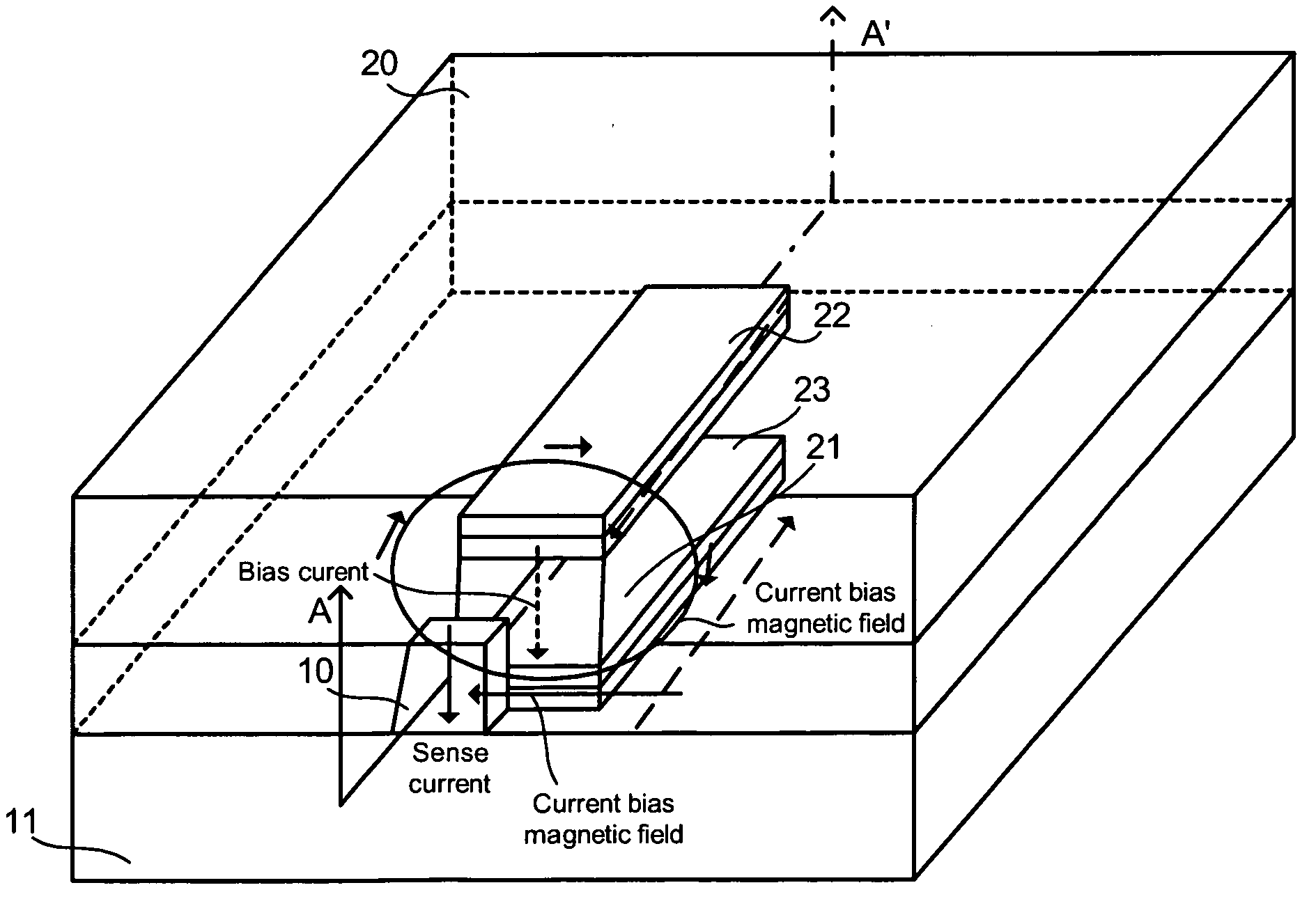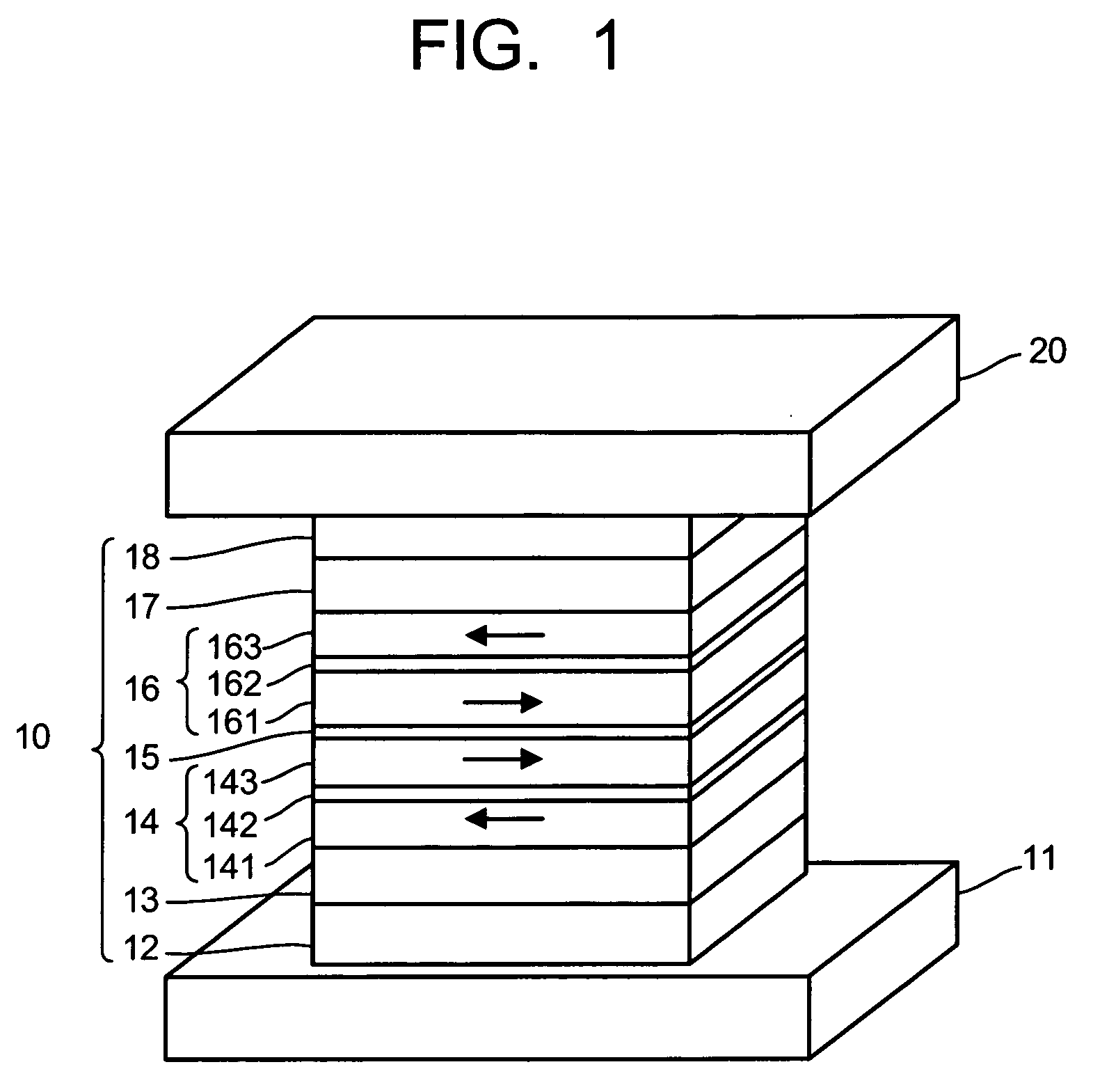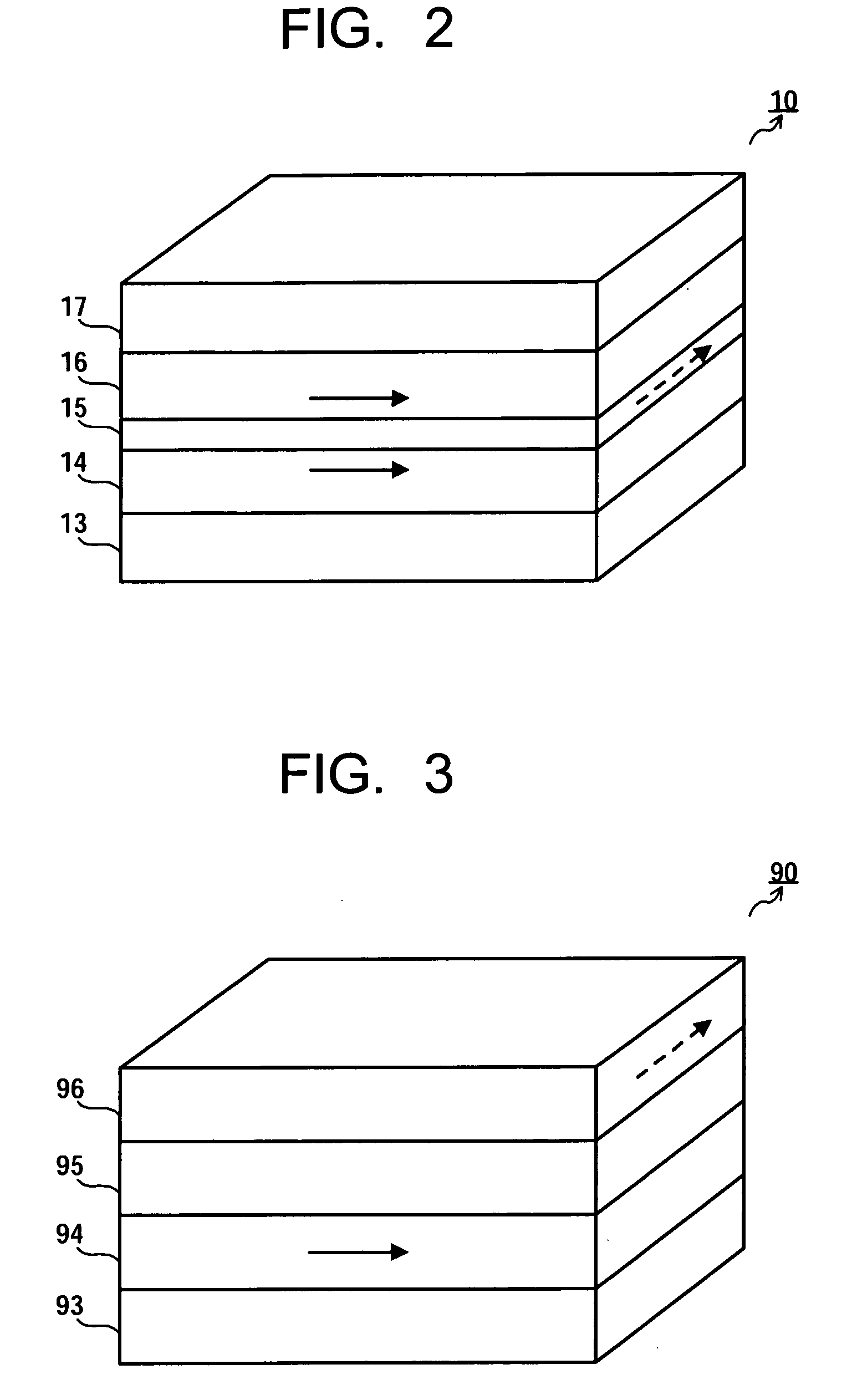Magneto-resistance effect element, magnetic head, magnetic recording device and magnetic memory
- Summary
- Abstract
- Description
- Claims
- Application Information
AI Technical Summary
Benefits of technology
Problems solved by technology
Method used
Image
Examples
first embodiment
sistance Effect Element
[0061]FIGS. 4 to 6 relate to the concrete structure of the magneto-resistance effect element wherein a current bias generating portion 21 is provided for the above-described magneto-resistance effect element as a fundamental structure. In these drawings, for simplification, the bottom electrode 11 and the top electrode 20 are omitted so that only the MR film 10 is represented as the magneto-resistance effect element. Since the current bias generating portion 21 applies a magnetic field to the spacer layer 15, the spacer layer 15 is concretely depicted in the MR film 10.
[0062]As shown in FIGS. 4 to 6, the current bias generating portion 21 is formed as a platy structure. In FIG. 4, the current bias generating portion 21 (platy structure) is disposed adjacent to the side surface of the magneto-resistance effect element so that the current is flowed therein along the thickness direction (from the top side to the bottom side). In this case, the clockwise bias magn...
example 1
[0081]Example 1 relating to the magneto-resistance effect element as shown in FIG. 4 (7) will be described. In Example 1, the magneto-resistance effect element was formed as follows:
[0082]Bottom electrode 11: NiFe 1.5 μm
[0083]Underlayer 12 (buffer layer 12a / seed layer 12b): Ta 5 nm / Ru 2 μm
[0084]Pinning layer 13: PtMn 15 nm
[0085]Pinned layer 14 (pinned layer 141 / magnetic coupling layer 142 / pinned layer 143): CoFe 3 nm / Ru 0.9 nm / CoFe 3 nm
[0086]Spacer layer 15: TiOx 2 nm
[0087]Pinned layer 16 (pinned layer 161 / magnetic coupling layer 162 / pinned layer 163): CoFe 3 nm / Ru 0.9 nm / CoFe 3 nm
[0088]Pinning layer 17: PtMn 15 nm
[0089]Cap layer 18: Ta 5 nm
[0090]Current bias generating portion 21: Ti 50 nm
[0091]The above-described layers were subsequently formed except the top electrode to form the laminated body, and then, thermally treated at 290° C. for four hours under a magnetic field of 10 kOe so as to enhance the crystallinity of the laminated body and the regularization of the pinning layer...
PUM
 Login to View More
Login to View More Abstract
Description
Claims
Application Information
 Login to View More
Login to View More - R&D
- Intellectual Property
- Life Sciences
- Materials
- Tech Scout
- Unparalleled Data Quality
- Higher Quality Content
- 60% Fewer Hallucinations
Browse by: Latest US Patents, China's latest patents, Technical Efficacy Thesaurus, Application Domain, Technology Topic, Popular Technical Reports.
© 2025 PatSnap. All rights reserved.Legal|Privacy policy|Modern Slavery Act Transparency Statement|Sitemap|About US| Contact US: help@patsnap.com



